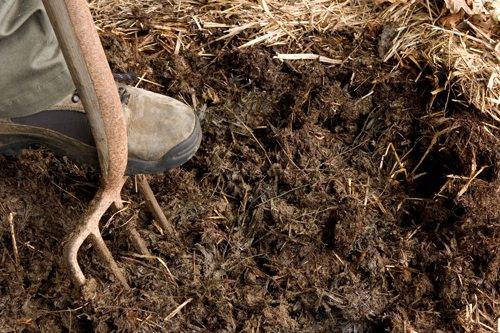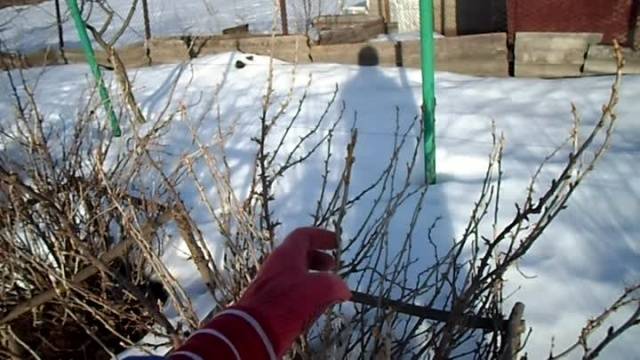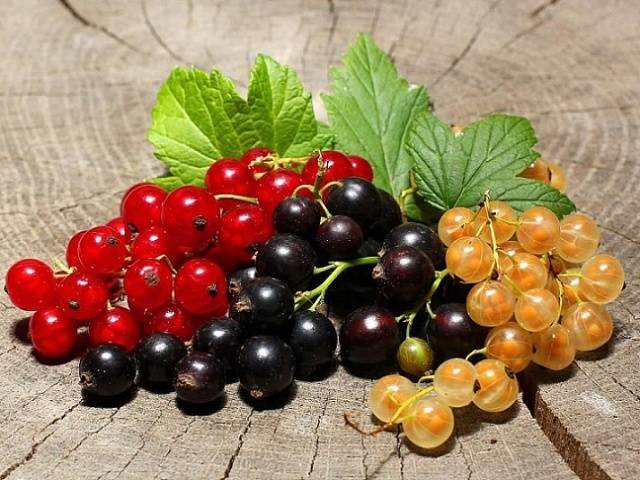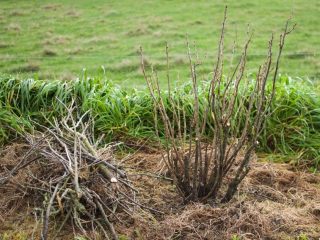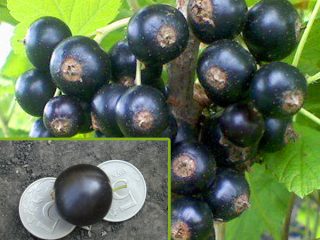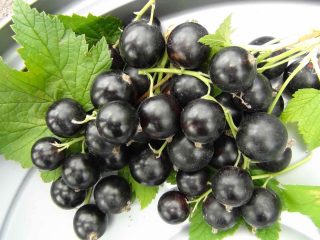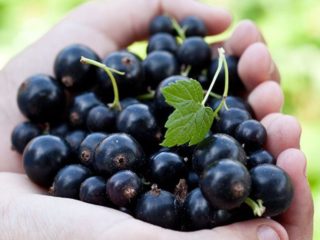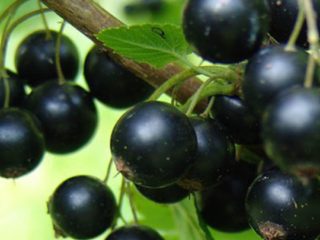Content
Currants are one of the most common berry bushes that many gardeners grow on their plots of land. Agricultural companies allocate vast areas for currant bushes to obtain harvests on an industrial scale, as well as for the propagation of high-quality seedlings and their further sale to the population. Significant currant yields can be achieved only by following the rules of technology for planting, fertilizing and fertilizing.
Our article today is entirely devoted to the issues of fertilizing and feeding black, red and white currant bushes in the spring. For beginning plant growers, we have prepared charts—schemes for organizing this work, included our recommendations and advice from experienced gardeners, and also added useful videos telling how to do everything correctly and in the right time.
Nutrition of fruit and berry bushes
A person needs to eat to maintain his vitality, performance and sanity, without food he will lose his mind, be exhausted, and as a result die of starvation within 2-3 weeks. The nutrition of a plant plays approximately the same role in its life; without a constant supply of nutrients from the soil or from the outside, it will wither and will not bear fruit.Such a plant is not needed in the garden, so it is necessary to learn how to properly care for it, find out all its needs and constantly carry out a set of measures that will ensure the normal growing season of fruit crops, and we will be provided with a bountiful harvest.
Soil for currants
Currants receive the main part of their nutrition from the ground., which contains all the necessary substances and microelements involved in metabolic processes within the plant. In second place in importance in the nutrition of trees and shrubs are involved climatic conditions: sunny warmth, abundant but infrequent rains, fresh air. The combination of all these favorable conditions allows currants to grow healthy, strong and resistant to various natural disasters. Even diseases and pests “bypass” such currants.
But..., as often happens, problems arise that a person needs to solve; currants have ceased to independently withstand adversity; they have been overcome by diseases and harmful insects. Let's figure out what's going on and what to do.
Let's start with the most earthly thing, that is, with the soil under the currant bushes.
- Before planting currant seedlings, it is necessary to determine the quality of the soil in the area where you decide to plant them. Favorite soils for currants include loose, well-permeable soils for air and moisture, fertile sandstone or light loam. Soil acidity should not be much higher than the minimum value on the acidity scale. If after checking the soil it turns out that all indicators are normal, you are lucky; if not, then you need to improve the soil.
- It is possible to improve the structure of the soil, make it light and fertile, but this work is labor-intensive; you will need to add compost, sand, lime, a large amount of organic matter (manure), mineral fertilizers to the soil and carefully dig the area several times, using not only a shovel, but also a pitchfork . Earthworms added along with compost and manure will loosen the soil, lime and sand will reduce acidity, manure and mineral fertilizers, taken together, will improve the soil and make it more fertile.
Planting seedlings
Having prepared the soil in this way, you can begin planting currant bushes. Spring is the most suitable time of year for planting any crops, because after spring summer will come and the currant bushes will have time to take root well in a new place and get stronger in order to produce a harvest of berries next year.
In early spring, after planting currants, they do the first pruning of the bush: the top of the main shoot is cut off by 1/3 of the entire height, 2-3 buds are left on the side shoots, the rest is cut off. After planting, you should not feed the young plant for 1-2 months. In order to prevent fungal and other diseases, as well as from pests, the first treatment of currants is done by spraying it with Bordeaux mixture or other fungicides.
During spring, summer and autumn, young seedlings do not need to be overfed with nitrogen fertilizers, they are introduced before planting in the form of manure and are sufficient for the development of another small bush; with an excess of nitrogen in the soil, the currants can wither and weaken, and die in winter.If currant bushes grow well on their own, then in the first year of life they will not require additional feeding, provided that in the spring you have applied all the necessary mineral fertilizers: potassium, phosphorus, nitrogen.
Caring for mature plants
In the early spring of the second year of life, the mature time for currants begins - the formation of fruits. Fruiting of currant bushes, depending on the variety and variety, lasts from 5 to 10 years. All this time, the fruit bush needs constant fertilization, fertilizing and regular treatments against diseases and harmful insects. Fertilizers are applied at the root or foliar feeding is carried out by spraying currant bushes with compounds containing all the necessary nutritional elements.
There should be at least 6 annual treatments and fertilizing of currants, but it is better to do this more often. Experienced gardeners advise doing them about 12 times. For example, we note that large currant growing companies process currant bushes on their plantations at least 20 times per season. They begin to fertilize and treat currants in early spring and end in late autumn. When, how and for what purposes they are carried out, you can find out from the schedule for completing these works, which we have compiled based on the advice and recommendations of our experienced gardeners.
Processing schedule
Currant growing season | Month (approx.) | Target | Facilities | How to do |
Before the buds open | March, April | Prevention from diseases and pests | Bordeaux mixture, Actofit, Fitoverm, | Spray with drug solutions 2 times with an interval of 7 days |
Swelling and bud break | April | First root feeding | Complex mineral fertilizers containing potassium, phosphorus and calcium, organic fertilizers | All fertilizers are applied under the currant roots during watering, manure and compost are incorporated into the soil when digging |
Before flowering begins | April May | Pest Control | Akarin, Iskra, Fitosporin-M, copper sulfate, Bordeaux mixture | Spray solutions of preparations on the branches and treat the soil |
During flowering | May | Second feeding | Do not use nitrogen-containing fertilizers; phosphorus, calcium and potassium are sufficient. | Water the currant bushes once a week with solutions of complex fertilizers |
After flowering and during fruiting | June July August | Prevention of pests and diseases, feeding | Folk remedies are mainly used so as not to disturb the ecology of the garden and not to destroy beneficial insects: wood ash, ammonia, potato peelings | Currants are watered and sprayed with infusions and decoctions, potato peels are placed under the bushes or hung on the branches of the plant, such feeding and treatments are carried out regularly, at intervals of 7-10 days |
After harvest | September October | Pest and disease control | Refer to point one | Same |
Tips and recipes from the people
Experienced gardeners, that is, people who have experienced many methods of feeding and processing currants, advise beginning hobbyists:
- To improve the quantity and quality of currant harvest, in the spring it is necessary to add enough cattle manure to the soil, but if there is none or very little of it, then chicken manure or urea can be used for fertilizing.
Recipe 1: take a bucket of warm water (7-10 liters) and add chicken manure (dry - 1 matchbox, fresh - 1 glass), stir thoroughly, leave for a day, then dilute the infusion again: make 2 from one bucket. You need to water once per week at the root, if you strain the tincture, you can spray the entire upper part of the plant.
Recipe 2 (for pests and diseases): Dissolve 700 g of urea (urea) plus 100 g of copper sulfate in 10 liters of water, stir, strain. Using a sprayer, treat all currant bushes in early spring before the buds open, pour the same mixture into the soil around them using a watering can with small holes. This product helps not only in the fight against insects, but also saturates the soil with necessary nitrogen. - Make currants more tasty and sweet Feeding the bushes with carbohydrates, which are contained in large quantities in starch, helps. The composition prepared from it is fed to currants during flowering and at the stage of coloring the berries.
Recipe 3: From 300 g of starch powder (potato, corn), cook jelly as you usually prepare it, without adding sugar. The volume of the pan is up to 4 liters. Cool the jelly and bring the quantity to 10 liters, diluting with water. For 1 currant bush, 2-3 liters of diluted jelly is enough. - In early spring, currants can be fed with dry fertilizers, applying them around the bushes and embedding them into the soil at the root. These fertilizers can easily replace manure, which can be difficult to obtain at the right time. These types of fertilizers include superphosphate in granules and powdered potassium sulfate.
Method of application: scatter superphosphate granules (40-50 g) near the currant roots within a radius of 0.5 meters from the center of the bush, scatter potassium sulfate powder (20-30 g) there, dig up or loosen the soil. Gradually dissolving, dry fertilizer will supply the plant with the necessary nutrients for a long time.
- Currant can be fed with potato peelings in spring, which contain starch, and, therefore, carbohydrates. This method is economical; you do not need to buy starch powders. This fertilizer should be used dried or frozen.
Recipe 4: dried or frozen potato peels are crushed and an infusion is prepared from it: 1 kg per 10 liters of hot water, infused for 24 hours, cooled, then watered over the currants at the rate of 5 liters of infusion per 1 bush.
The benefits of proper plant nutrition
Constant feeding of currants plays an important role in many aspects of the plant’s life:
- currants do not lack nutrients, and, therefore, are provided with energy for growth, flowering and fruiting;
- its productivity increases due to the regular supply of necessary microelements for the formation of a large number of fruit ovaries, development and increase in the mass of berries, taste qualities are significantly improved;
- fertilizing strengthens the plant, it is able to independently resist diseases and pests, and tolerates winter cold and spring changes in air temperature more easily than weakened bushes that did not receive fertilizers in a timely manner;
- Fed currant bushes produce a good annual increase in young shoots - this is the key to future abundant harvests.
The land on which our plants grow is full of useful substances and for the time being it is able to satisfy the needs of currant bushes, feeding them with its juices, but, as they say, “nothing lasts forever,” and the time comes when the earth’s reserves are depleted, and this can lead to to disastrous results. Apply fertilizing regularly, do not bring the currants to this state.
Conclusion
All plants in the garden and vegetable gardens are entirely dependent on the “good will” of their owner. A caring and zealous gardener or gardener, feeding himself, will never forget about the nutrition of his green pets, just as a skilled cook invents new dishes for people, so a diligent plant grower comes up with recipes for fertilizing for currants and other plants so that they are useful and do not harm the garden and vegetable garden

